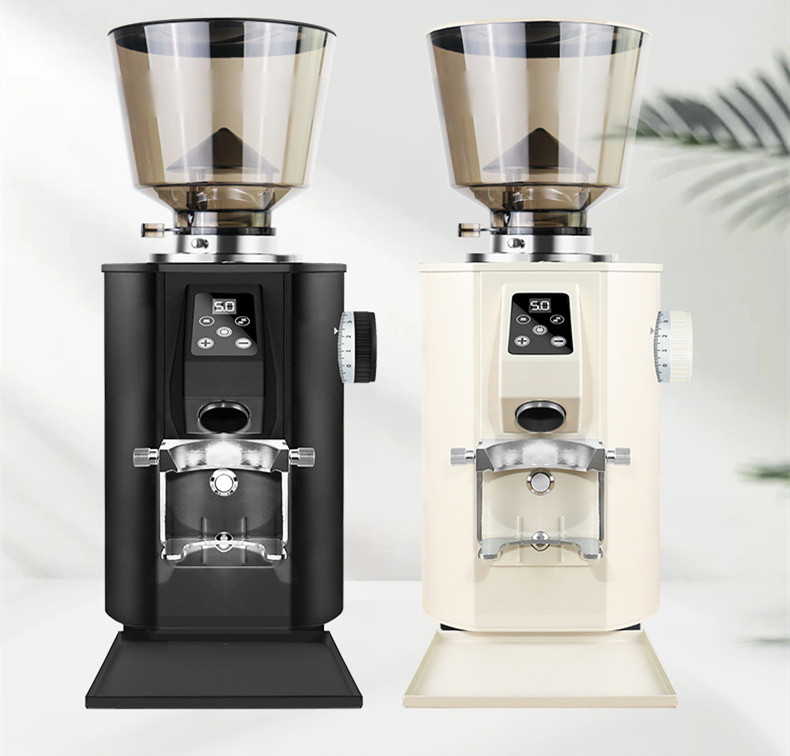Preventing Moisture Damage and Maintaining Coffee Grinders in Humid Environments
Coffee grinders exposed to humidity face unique challenges, from clogged mechanisms to rusted components, which can degrade performance and shorten lifespan. Moisture accelerates the breakdown of coffee oils, promotes bacterial growth, and causes electrical malfunctions. By implementing targeted strategies, users can protect their grinders and ensure consistent grinding quality even in damp conditions.
Understanding the Risks of Humidity on Grinder Components
Humidity affects different parts of a coffee grinder in distinct ways, requiring tailored solutions for each area.
Impact on Burrs and Grinding Mechanism
- Why It’s Problematic: Burrs, whether steel or ceramic, are prone to corrosion in humid environments. Moisture causes metal burrs to rust, leading to uneven grinding and metallic particles contaminating the coffee. Ceramic burrs, while resistant to rust, can develop cracks if exposed to sudden temperature changes caused by condensation.
- Signs of Damage: Coffee grounds appear clumpy, inconsistent in size, or have a metallic taste. The grinder may produce unusual noises during operation.
- Preventive Measures: After each use, run the grinder for 5–10 seconds without beans to expel residual moisture. Store the grinder in a dry cabinet or use silica gel packets in the storage area to absorb ambient humidity.
Risks to Electrical Systems and Motor
- Why It’s Problematic: Moisture can seep into motor housing or control panels, causing short circuits, erratic behavior, or complete failure. Condensation inside the grinder may also damage switches, wiring, and circuit boards.
- Signs of Damage: The grinder fails to turn on, stops mid-cycle, or emits a burning smell. Visible rust or water stains on the exterior indicate internal moisture ingress.
- Preventive Measures: Avoid placing the grinder near sinks, dishwashers, or open windows. If the grinder is accidentally exposed to water, unplug it immediately and let it dry completely in a well-ventilated area for 24–48 hours before reuse.
Effects on Bean Hopper and Grounds Container
- Why It’s Problematic: Plastic or glass hoppers and containers can trap moisture, leading to mold growth or clumping of coffee beans. Static electricity, exacerbated by humidity, causes grounds to stick to surfaces, clogging the chute or burr chamber.
- Signs of Damage: Beans appear stuck together, or the grinder dispenses grounds unevenly. A musty odor from the hopper or container indicates mold or mildew.
- Preventive Measures: Wipe the hopper and container with a dry cloth after each use. Store beans in airtight containers with desiccant packs to minimize moisture absorption before grinding.
Daily and Weekly Maintenance Routines for Humid Conditions
Consistent upkeep reduces the likelihood of moisture-related issues and preserves grinder functionality.
Post-Use Cleaning Protocol
- Dry Brushing: Use a soft-bristled brush to remove coffee grounds from the burrs, chute, and container. Avoid water, as it can introduce moisture into crevices.
- Airflow Management: Leave the grinder’s lid or hopper open for 15–20 minutes after cleaning to allow residual moisture to evaporate. Position the grinder near a dehumidifier or fan if possible.
- Anti-Static Techniques: Lightly dampen a microfiber cloth with isopropyl alcohol (70% concentration) and wipe the exterior to reduce static buildup, which attracts humidity. Ensure the cloth is not wet enough to drip.
Storage Best Practices
- Elevated Placement: Store the grinder on a shelf or countertop away from floors, where humidity tends to accumulate. Use a waterproof mat or tray underneath to catch accidental spills.
- Climate Control: If the environment is consistently humid (e.g., coastal regions), invest in a dehumidifier for the storage area or use a sealed plastic container with desiccant packs to house the grinder when not in use.
- Avoid Enclosed Spaces: Do not store the grinder in cabinets or drawers without ventilation, as trapped humidity accelerates corrosion and mold growth.
Scheduled Component Inspections
- Burr Examination: Every 2–4 weeks, detach the burrs (if possible) and inspect for rust, pitting, or cracks. Replace them immediately if damage is detected, as compromised burrs affect grind quality and safety.
- Motor Vent Checks: Ensure motor vents are free of dust and debris, which can trap moisture and restrict airflow. Use compressed air to blow out blockages gently.
- Seal Integrity: Check rubber gaskets around the hopper, container, and motor housing for cracks or wear. Damaged seals allow moisture to enter, so replace them promptly to maintain a watertight barrier.
Long-Term Strategies to Mitigate Humidity Damage
Proactive adjustments to usage habits and environmental controls provide lasting protection against moisture.
Adjusting Grinding Frequency and Volume
- Smaller Batches: Grind coffee in smaller quantities to reduce the time beans are exposed to humid air. Freshly ground coffee is less likely to absorb moisture than pre-ground batches stored in the grinder.
- Timed Grinding: Avoid grinding beans hours before brewing, as prolonged exposure increases clumping risk. Instead, grind just before use to minimize contact with humid air.
Using Protective Coatings on Metal Parts
- Food-Grade Lubricants: Apply a thin layer of food-safe lubricant (e.g., mineral oil) to metal burrs and threads every 3–6 months to create a moisture-resistant barrier. Wipe off excess to prevent contamination of coffee grounds.
- Ceramic Coatings: For grinders with removable metal components, consider applying a ceramic-based spray coating designed for kitchen tools. These coatings repel water and reduce friction, extending part life.
Environmental Modifications for High-Humidity Areas
- Ventilation Upgrades: Install exhaust fans in kitchens or brewing stations to improve airflow and reduce humidity buildup. Open windows during dry weather to promote cross-ventilation.
- Humidity Monitors: Use a hygrometer to track ambient humidity levels. If readings consistently exceed 60%, take additional measures like running a dehumidifier or relocating the grinder to a drier room.
By combining daily cleaning, strategic storage, and long-term environmental adjustments, users can safeguard their coffee grinders from humidity-related damage. Prioritize dry conditions, regular inspections, and prompt repairs to maintain optimal performance and extend the equipment’s lifespan.


